Conform Stretch Gauze Bandages
Login For Dealer Pricing
These conforming bandages are made from gauze and designed to adhere to the contours of the angled treatment areas like the knee or elbow. Available in both sterile and non sterile forms.

Wound dressings are placed in direct contact with a wound in order to help it heal without interference from foreign objects or other agents that may cause infections or complications. They are an essential component of wound care supplies for any health care institution.
There are many types of wound dressings in common use and they are designed to treat the wide range of wounds that medical professionals may encounter from day to day. However, the one overriding goal that all dressings share in common is the prevention of infections.
Other goals of specific types of wound dressing are:
As mentioned above, there is currently a very large number of dressing types on the market today. It is useful to provide an overview of the different types of dressing n common use as well as their basic strengths and weaknesses.
This is the most prevalent type of wound dressing in use. Its main strengths are its applicability to a wide variety of wound types. Typical uses include protecting open wounds from minor injury, treating small patches of broken skin or treating wounds in highly areas, where its extreme conformability comes in useful.
Cloth dressings are also versatile enough to serve as either first first layers of protection or as second layers in order to provide collateral security to the wound.
These wound dressings allow doctors to continuously monitor the healing progress of a wound while the bandage remains in place. This makes them a favourite for dressing wounds for which there is a high risk of complications or infection. The types of wounds for which transparent dressings can be a preferred option include surgical incision sites, ulcers, burns and intravenous sites.
This is another common type of wound dressing and has absorbency as its main strength. It is able to absorb large amounts of excess fluid from a wound while keeping it moist. This derives from the unique property of foam to allow water vapour to pass through it while blocking bacteria.
Maintaining moisture around the wound shortens healing time, protects the wound from infection and helps to ward off foul odours that may be a problem for certain types of wound.
These dressings are made from a self adhesive but non breathable material. Like foam dressings, hydrocolloid dressings are designed to maintain a moist wound environment in order to promote faster healing. They are also highly regarded for their ability to last for exceptionally long periods.
To achieve this, the dressing surface is coated with various polymers that absorb water to form a gel.The dressing then keeps the gel in direct contact with the wound in order to promote healing.
Hydrocolloid dressings are a popular option for treating burns, lightly draining wounds, necrotic wounds or pressure or venous ulcers.
As with hydrocolloid and foam dressings, these are designed to add moisture to the wound environment. This property helps the dressing heal the wound faster but also break down dry and dead tissue.
These are highly versatile dressings that are applicable to many types of wounds. Having said this, they are probably most widely used on unusually painful or necrotic wounds, second degree burns and wounds that have been complicated by means of infection.
Hydrogel dressings are flexible enough to also be used to reduce potential problems from friction, chafing and blisters. 2nd Skin Squares or Circles are examples of this.
These dressings are designed for maximum absorbency, placing them at the opposite end of the spectrum from dressings like hydrogel or hydrocolloid.
They are a great option for wounds that are already creating lots of excess fluid from drainage of blood or other fluids (e.g. abdominal wounds). On wounds that have a tendency to dry out, alginate dressings will only exacerbate that problem and should therefore be avoided.
One drawback of alginate dressings is the need to change them frequently (a direct result of their high absorbency)
These dressings are fundamentally different from the types discussed above in that they can act as a second skin to allow new cells to grow on the wound bed. This helps shorten healing time, particularly for chronic wounds when healing has stalled due to complications.
Collagen dressings are a recommended option on wounds such as pressure sores, transplant sites, certain surgical wounds or injuries that cover a large body area, among others.
Wound dressings play a crucial role in healthcare, particularly in the management and treatment of various types of wounds. These specialized materials are used to cover and protect wounds, promote healing, and create an optimal environment for tissue repair. Wound dressings serve several essential functions that are integral to the healing process. Let’s explore the key roles of wound dressings in healthcare:
Wound dressings provide a protective barrier that shields the wound from external contaminants, such as dirt, bacteria, and other foreign particles. By covering the wound, dressings prevent potential infection and reduce the risk of complications. They also help contain any drainage or exudate from the wound, maintaining a clean and controlled environment that promotes healing.
Maintaining an appropriate moisture balance is critical for optimal wound healing. Certain wound dressings, such as hydrogels, foams, or hydrocolloids, are designed to create a moist wound environment. This moist environment supports cell migration, facilitates the formation of new tissue, and promotes faster healing. Conversely, other dressings, such as alginate or absorptive dressings, are used to manage excessive wound exudate and maintain a drier environment, depending on the specific needs of the wound.
Debridement is the process of removing dead or non-viable tissue from a wound to promote healing. Certain dressings, such as enzymatic or autolytic dressings, are designed to facilitate this process. These dressings help to break down and remove necrotic or devitalized tissue, preparing the wound bed for healthy tissue regeneration. By promoting debridement, dressings contribute to the elimination of barriers to healing and facilitate a more efficient wound healing process.
Many wounds produce exudate, which is the fluid that is released from the wound during the healing process. Excessive exudate can impair healing, delay wound closure, and increase the risk of infection. Wound dressings with absorbent properties, such as foams or absorptive dressings, effectively manage and absorb excess exudate, helping to maintain an optimal moisture balance in the wound bed and preventing maceration of the surrounding healthy tissue.
In certain cases, wounds may be located in areas prone to friction, pressure, or mechanical stress. Dressings provide a protective cushioning layer that helps distribute external forces and reduces the risk of further trauma to the wound. This protection is particularly important in preventing complications such as pressure ulcers or further tissue damage during movement or physical activity.
Some advanced wound dressings are specifically designed to promote angiogenesis (formation of new blood vessels) and granulation tissue formation. These dressings may contain growth factors or bioactive components that stimulate the body’s natural healing processes. By enhancing blood flow and tissue regeneration, these dressings accelerate wound healing and facilitate the development of healthy granulation tissue.
As every wound dressing has strengths and weaknesses, it is important to identify the features of the most appropriate dressing to use in any situation.
Below, we have set out a number of suggested questions you should ask before choosing a dressing to use in any situation:
If many of the wounds tend to be dry, you should consider having a selection of wound dressings on hand that will donate moisture. One example of these is a hydrogel dressing. On the other hand, if many of the wounds are moist or exudative, you will need a good supply of dressings & bandages that will absorb the excess moisture.
If so, you will need a supply of wound dressings that contain anti infection agents like silver or iodine. However, bear in mind that these dressings vary greatly in their absorptive abilities. Consequently, you will need to consider the answer to the first question above together with the response to this one.
This may be the case, for example, with wounds that are the result of conditions like cancer or pressure ulcers. In this case, a charcoal wound dressing will help by absorbing the malodorous gases emanating from the bacteria.
Wound dressings are essential tools in healthcare, playing a vital role in protecting, promoting healing, and managing various types of wounds. By providing a protective barrier, creating an optimal moisture balance, facilitating debridement, absorbing exudate, and offering cushioning and protection, wound dressings contribute significantly to the overall management and successful healing of wounds. The selection of appropriate dressings depends on the specific characteristics of the wound, the desired healing outcomes, and the individual patient’s needs, with healthcare professionals applying their expertise to determine the most suitable dressing for each situation.
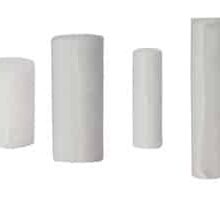
Login For Dealer Pricing
These conforming bandages are made from gauze and designed to adhere to the contours of the angled treatment areas like the knee or elbow. Available in both sterile and non sterile forms.
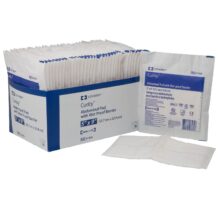
Login For Dealer Pricing
Curity Abdominal Pads have all edges sealed to eliminate the possibility of lint residue and leaking. Designed to keep foreign matter and wound exudate away from the wound in order to reduce infection risk.With a soft non woven layer for additional patient comfort and a fluff filler for additional absorbency, these pads offer the ultimate in patient comfort and promotion of healing.

Login For Dealer Pricing
Curity Wound Closure Strips are 0.25″ x 3″ in size and are mounted on sleeves. 150 sleeves/box. Typically hey are used for cuts or wounds that aren’t too severe or for minor surgery.
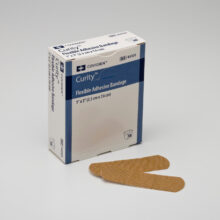
Login For Dealer Pricing
Curity Fabric Bandages are highly flexible, conforming, breathable and latex free bandages specifically designed for fingers, elbows, toes and other highly contoured areas of the body.
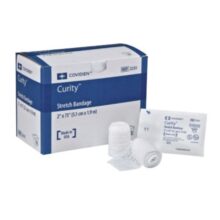
Login For Dealer Pricing
Curity Stretch Bandages offer a combination of softness, absorbency and moderate stretch that allow for best in class conformity and optimum clinical flexibility. Single ply thickness and disposable (non reusable). Sold by the pack of 12 bandages.
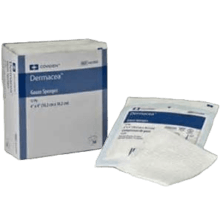
Login For Dealer Pricing
Demacea Gauze Sponges can be used for wound care, cleaning and preparation work and are easy enough to be used both in o hospital or home setting. They come in a variety of sizes and thickness options that ensure that there will be one suitable for use in virtually any situation.

Login For Dealer Pricing
Excilon drain sponges are a great choice for reducing the risk of wound infections while deceasing the frequency of required dressing changes.
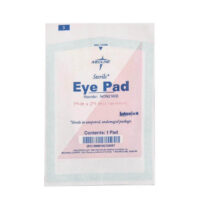
Login For Dealer Pricing
Ideal to protect the eye from coming in contact with debris after surgery or to protect an eye wound. Low linting, sterile and highly absorbent. Sold in 50 pads/box
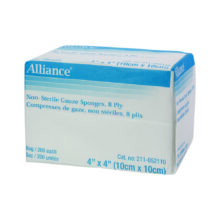
Login For Dealer Pricing
Alliance Gauze Sponges are your versatile and essential solution for wound care, medical procedures, and general first aid. These highly absorbent and multi purpose sponges are essential accessories in every wound care kit. Available in a range of sizes and in both sterile and non sterile versions.
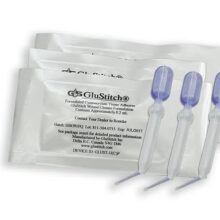
Login For Dealer Pricing
GluStitch is designed for closure and protection of superficial skin wounds instead of stitches. Single use application. Must be refrigerated. Sold by the vial. 12 vials/box.
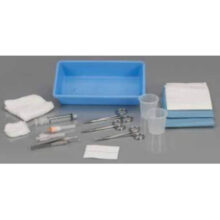
Login For Dealer Pricing
This laceration safety tray contains sponges, safety needles, scissors, forceps and the other accessories needed to safely and effectively treat minor lacerations.
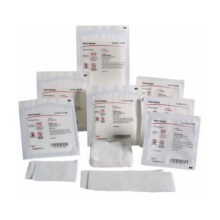
Login For Dealer Pricing
Premium woven gauze sponges designed to meet all wound care needs.

Login For Dealer Pricing
Wound closure strips are porous surgical tape strips which secure and close small cuts and wounds by pulling the skin together on either side of the wound. Available in different sizes for different types of lesions.

Login For Dealer Pricing
3 Compartment Sterile Dressing Tray. Includes metal & plastic forceps, field towel, absorbent towel, cotton balls, non woven gauze sponges and waste bag for convenient disposal.

Login For Dealer Pricing
Tegaderm is used to cover wounds and catheter sites. This transparent film conformable dressing moves with the skin for greater comfort. Available in various sizes.

Login For Dealer Pricing
Telfa Adhesive Island Dressing features a highly absorbent cotton core surrounded by a perforated non adherent film that preserves the ideal balance between preserving a moist wound environment and removal of wound exudate. Can be used either in a hospital or home setting.

Login For Dealer Pricing
Telfa Non Adherent Dressing is the ideal choice for treating lightly draining wounds. Health care professionals can use these products as primary dressings for lightly draining wounds or for covering dry wounds to protect the skin during the healing process

Login For Dealer Pricing
Telfa Ouchless Adhesive Dressings are sterile and are manufactured to ensure no disruption to healing tissues due to the dressing sticking to the wound – hence “ouchless”.

Login For Dealer Pricing
WoundSeal wound treatment powder is the ideal first aid accessory to stop bleeding in seconds.